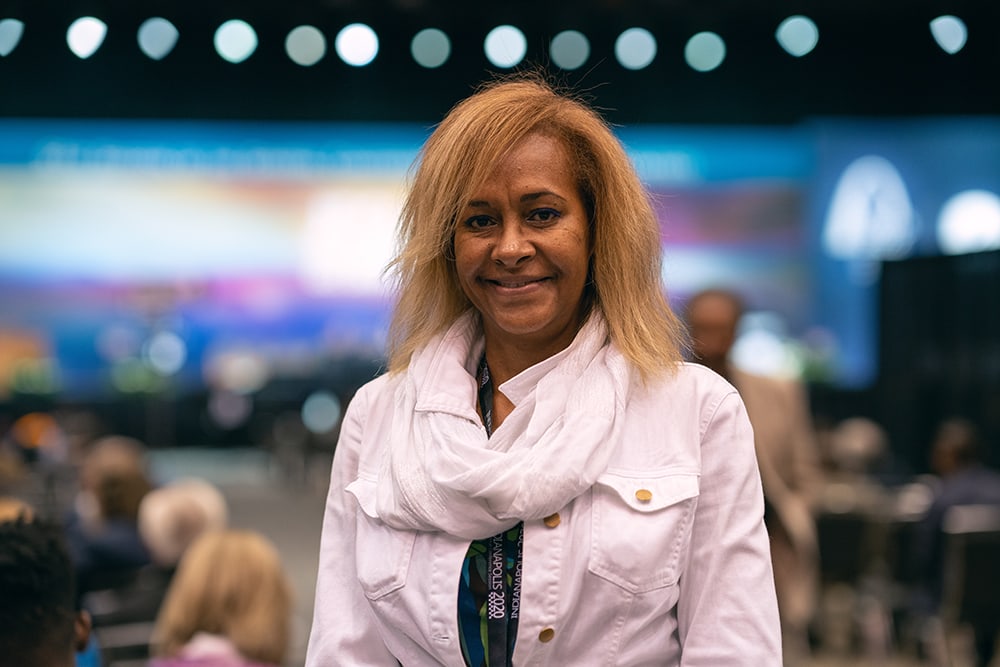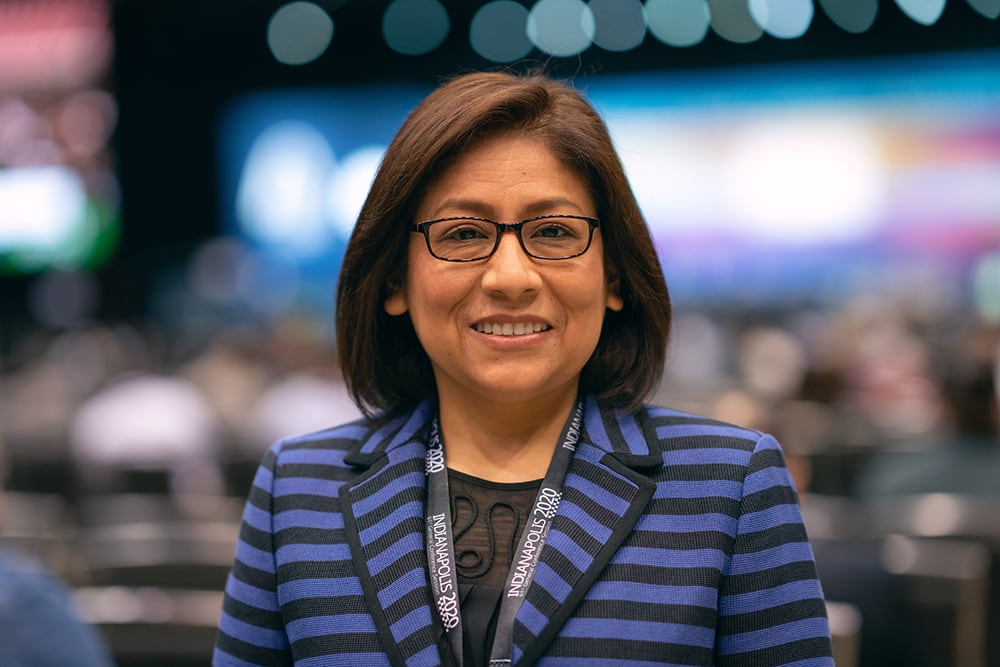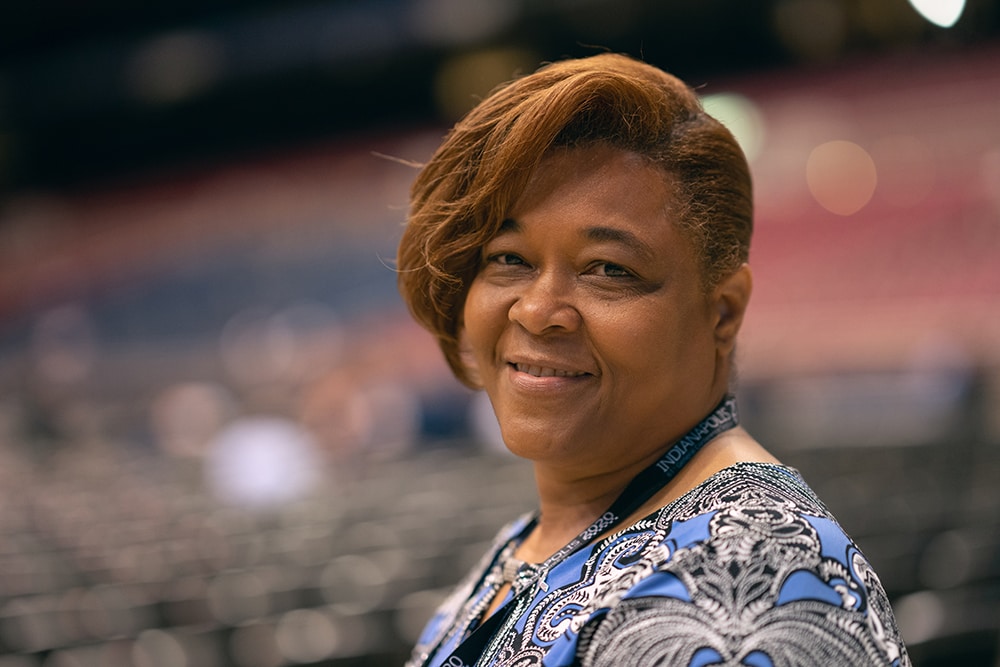
I arrived at the airport in plenty of time to make my flight, so I sat in the eatery to enjoy a relaxing lunch. With the General Conference Session being reduced to only delegates and their families (with no in-person exhibit hall), I wondered how many Adventists I would see in the airport traveling to Saint Louis, Missouri, United States. Part of the fun of attending a session is arriving at the airport and discovering that a lot of your friends and colleagues are going on the same journey.
I sat in the corner of the gate area, not seeing anyone pass by that I knew. Wow, I thought to myself, this isn’t going to be as much fun. We didn’t always sit together, but just heading to the same place made it memorable. I might as well get up and stand in line.
That’s when I noticed them: two people from the General Conference Stewardship Department. I gave them a big smile and a hearty wave. Then I saw two others. And two others. Yes! This was going to be fun after all!
Family Caucus
I realize that General Conference Session and fun aren’t always considered synonymous. Admittedly, if you had spoken with me during business sessions, fun wouldn’t have been my first description of the experience. However, another word for General Conference is family reunion. (OK, two words.) One of the joys of this once-in-a-quinquennium meeting is that we see our church family members whom we haven’t seen in years. And over the years, many Adventists have saved up their money and vacation time to attend the Session for this grand family reunion.
I was intrigued by Renee Battle Brooks’ comments about her family in relation to General Conference Session. She said, “My parents/family attended every session since the late 1940s or 1950s to date (I’ve only missed one). This is my second time serving as a delegate; I am usually participating in the music ministry. I have appreciated the hard work that goes into putting each session together. The front line staff in the trenches that work long hours, behind the scenes often without recognition, are truly appreciated.”


It is with these family members that we sit in business sessions to determine how we are going to relate to each other corporately during the next five years through policies, manuals, and so on. Some processes and cultural expectations can be challenging. Delegates’ orientation includes encouragement to be present for the business sessions, maintain confidentiality when called for, and respect decisions they may not agree with. I believe this is wise counsel for corporate and personal family caucuses — especially with the varied backgrounds and perspectives.
Serving as a delegate is a privilege I think many take for granted. For those of us who have worked for the church for many years and attend meetings on a daily basis, the GC Session can be viewed as “just one more meeting.” But Ellen White believed that it is the most important meeting we will ever attend (see Letter 20, 1888, in The Ellen G. White 1888 Materials, p. 38).
According to General Conference Secretariat, we had approximately 2,671 voting delegates representing more than 166 countries: 1,941 registered to attend on-site and 688 registered to attend virtually.
The number of delegates in the 2015 General Conference Session wasn’t much different: 2,617 delegates. At that session, with all the special guests and visitors, however, the attendance overall was approximately 62,000. I must confess that, while I missed a lot of people I used to see in the larger gatherings, this time I enjoyed not having to allow twice as much time to get to meetings because of all the interruptions along the way! I must also confess that I hope we as a church find a balance between getting the business done and having time for “family reunions” along the way.
A Day in the Life of a Delegate
So, what did a delegate actually do? Let me take you through a delegate’s day in St. Louis.
The journey for everyone began at registration. As you walked into the large hall that has registration booths for all 13 divisions, your first decision is to determine, “Who am I?” You may laugh, but many people showed up at the North American Division registration booth unsure of where they belonged. I believe this is due to the fact that most members typically don’t identify themselves as, “I’m a member of the Trans-European Division” but rather, “I’m a member of the ABC Adventist Church,” or “I’m an employee of a hospital or university.” Once you proved your identity, you were given your picture badge that you must wear to get access to business sessions and, just as important, the cafeteria for lunch.
The morning began with delegates worshipping together. We had Mark Finley talk to us about praying through the book of Psalms, Dwight Nelson speaking about “shameless audacity,” and Barry Black discussing the power of memorizing Scripture. (When Chaplain Black was a child, his mother used to give him a nickel every time he memorized a verse. He went from flunking his classes to valedictorian, and he has an amazing amount of God’s Word in his head.)
Dwain Esmond gave a powerful message that challenged us with a question as Adventists: “Do you still know how privileged you are?” Charissa Torossian also gave us a dynamic journey through the life of Mary Magdalene and her deep love for Jesus. Her challenge was, “How much is Jesus worth to you?”
After worship, the morning business sessions began. Our leaders brought recommended changes, which made for long meetings with agendas to discuss, nominations to be made, policy and church manual items to update. Then, the beauty and the beast of the process is that speakers may go to the microphones to voice their affirmations and concerns. The beauty is that it allows delegates’ voices to be heard, which is one of the foundations of this process. I say the beast because if many people want to speak, and sometimes the same concept is repeated, the lengthy discussion could derail the agenda and even take us off course from the recommended changes. That’s when a chair or two said, “Please go to the microphone if you desire to speak. But don’t feel as if you have to speak!” I love such honesty. Yet it is truly the “genius,” if you will, of the process, and it’s the give-and-take in the dialogue between delegates and leaders that makes it valuable. We may disagree, but, as one delegate stated, “We come together for the good of the church.” And, I would add, for the family.


One of the highlights of the delegate experience was that of receiving the nominating reports from the nominating committee. Many delegates wait in anticipation of hearing who is going to be nominated for their territory.
While the nominating report was a time of anticipation for delegates, it was an intense time for the nominating committee members. It’s challenging work to choose leaders for a global church, even among seasoned church workers. Roger Bernard, president of the Central States Conference based in Kansas City, Kansas, United States, served on the nominating committee for the first time.
“It has been enlightening. I’ve learned how difficult it is for the nominating committee to come to a consensus on those who will serve the Seventh-day Adventist Church on the General Conference level,” Bernard said.
Rick McEdward, president of Middle East and North Africa Union Mission (MENA) added, “The sheer volume of the task was challenging. But I saw a very cordial and respectful tone demonstrated throughout, which made the committee work easier, even though difficult.”
When delegate Mari Escudero from the Houston Spanish Spring Branch Seventh-day Adventist Church in the Southwestern Union of the NAD was asked why she agreed to become a delegate, she stated, “It was God’s call. When I was 15 years old, I became a youth director in my church. I read the Church Manual.” (How many 15-year-olds do you know who have read the Seventh-day Adventist Church Manual?)
She continued, “And I thought to myself, What would it feel like to be at a General Conference Session and have the responsibility to choose the leaders of the church? I attended the 2010 and 2015 Sessions, but for this Session, I was chosen to be part of the nominating committee. It is a privilege.”
Education and Inspiration
The business sessions also included inspiring reports sharing what the Lord has done through the departments’ work. One such report was given by GC Presidential, sharing the story of former rebels whose lives were transformed by the power of the gospel.
Traci Oms, a first-time delegate, was intrigued to participate in a GC Session. “I have learned quite a bit about various aspects of the world church. I didn’t know much about what exactly the General Conference did beyond managing the world church administratively,” she shared. “I hoped to be able to effect changes that would be beneficial to the church. I have already received a keener sense of the need for sharing God’s message with the world.”


The GC Treasury report included the fact that our world mission offerings have decreased over the years. In the 1930s, members were giving 60 cents for world missions for every tithe dollar given. Currently, they are giving 3.5 cents for every tithe dollar given. This report impacted delegate Mary Collins from the New Orleans First Seventh-day Adventist Church in the Arkansas-Louisiana Conference. She said, “I’ve always been involved in church work, even before becoming an Adventist. I was fascinated with church structure and wanted to know how it worked. I am going to go back, remind my fellow church members that we are part of a bigger organization, and make a plea to increase their mission offerings.”
I appreciated the delegates’ challenge to church leaders to include more women and young adults in church leadership. Jennifer Patterson, the youngest delegate from the Southern Union Conference (I didn’t ask her age!), shared her experience as a first-time delegate. “I didn’t realize the large scale and diversity at these Sessions. There is so much going on, especially decisions being made to set precedence for years to come. That’s why I think we need to orient more young adults to the processes of the church; these decisions will affect them. I think we need leaders to build mentoring into their programs, with invitations and intentionality. A multi-generational approach is needed in which leaders mentor young adults, and they mentor the leaders.”
The Big Picture
As many of our delegates have discovered, we are part of a bigger organization. A worldwide church. A global family. Like any family, we sometimes see things differently. Like any family, we have disagreements. Like any family, we even have to apologize for our behavior at times. We may not always sit together, but just knowing we’re heading to the same place makes it memorable.
Bonita Joyner Shields is an associate secretary of the North American Division of the Seventh-day Adventist Church. Kristina P. Busch, Southwestern Union communication director; Hugh Davis, Mid-America Union associate director of communication; and Roger Wade, South Central Conference communications and public relations director contributed to this report.
The original version of this story was posted on the North American Division news site.